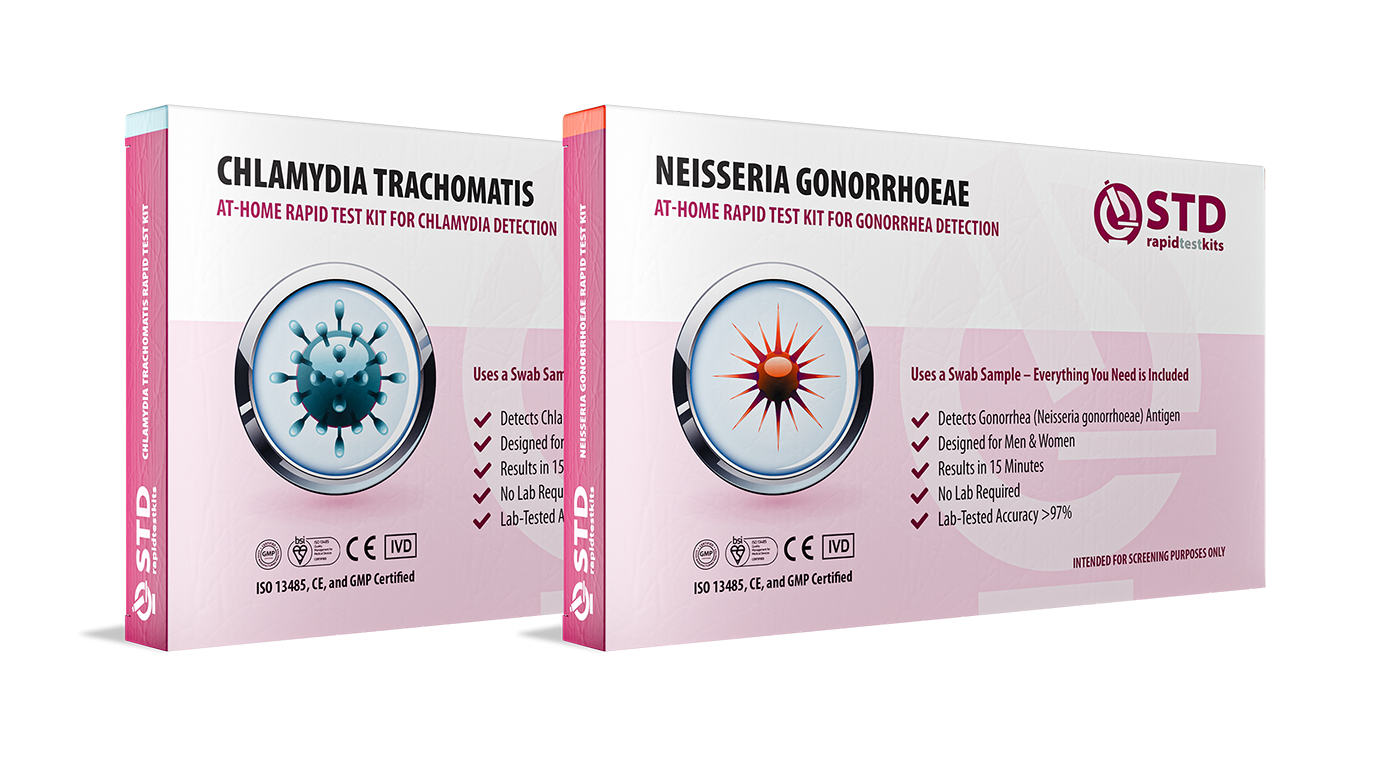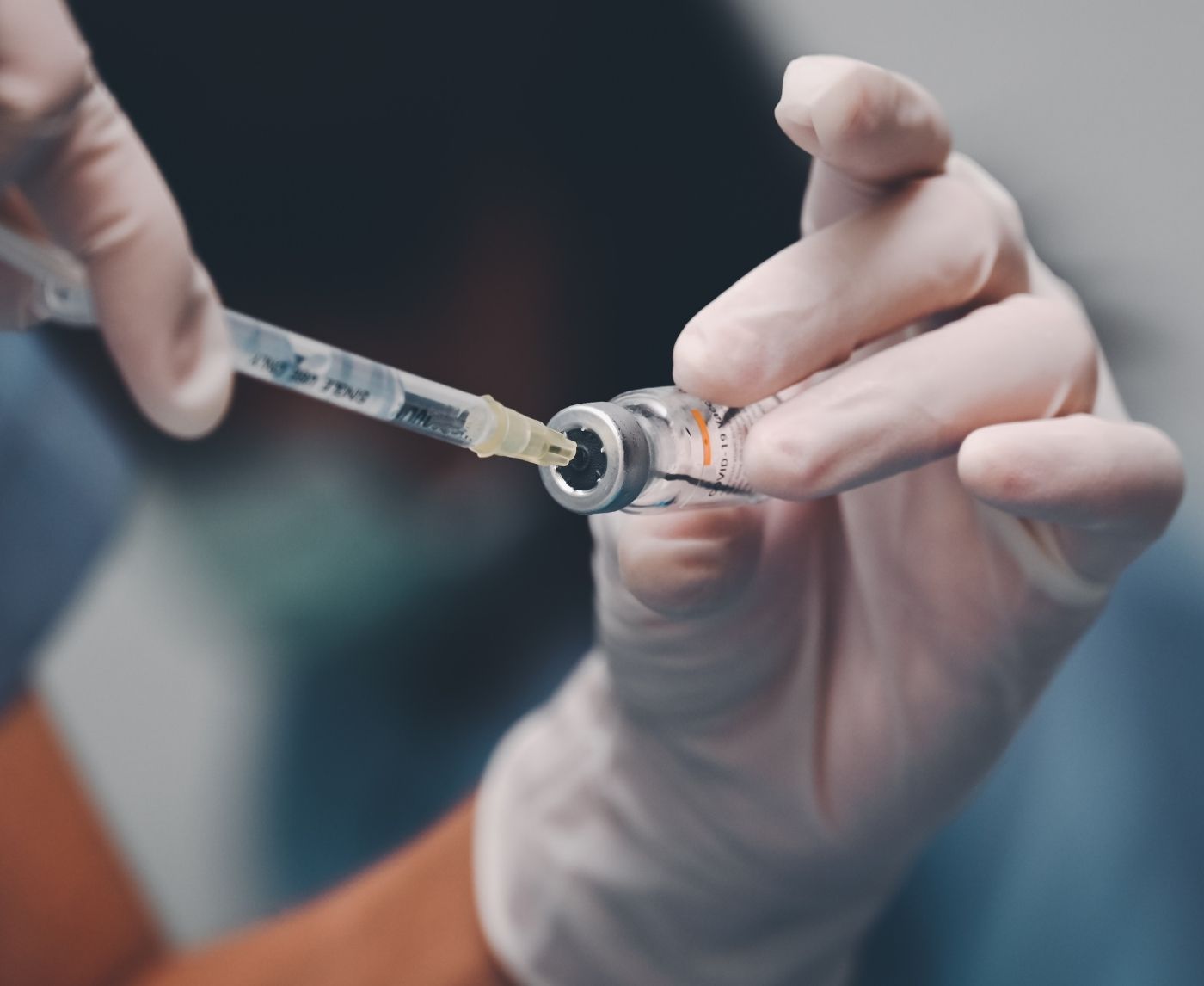Why the Chlamydia Vaccine Matters
Chlamydia isn’t just the most reported bacterial STD in the world, it’s also one of the sneakiest. Around 70% of women and 50% of men with Chlamydia don’t show symptoms, according to the CDC. That silence is deadly for reproductive health: untreated Chlamydia can lead to pelvic inflammatory disease (PID), infertility, and chronic pelvic pain. In men, it can cause epididymitis and affect fertility too.
That’s why a vaccine isn’t just exciting, it’s revolutionary. It could finally give people a chance to protect themselves before they’re exposed, not just after an awkward call from an ex or a surprise test result.
But progress hasn’t been quick. Bacterial STIs like Chlamydia have proven trickier to vaccinate against than viral ones. And until recently, funding was slow, stigmas high, and pharma interest low. That’s finally starting to change.

People are also reading: Eye Infection After a Hookup? It Might Not Be Just Pink Eye
The Current Status: Where Are We in 2025?
The short answer? Human trials are underway, but we’re not at the pharmacy counter yet. The first mRNA-based Chlamydia vaccine developed by Sanofi, in collaboration with academic researchers, began Phase 1 trials in 2022. As of 2025, it has entered Phase 2 testing, focusing on both safety and immune response effectiveness in diverse populations.
Another major breakthrough: a UT Health San Antonio team launched an oral vaccine candidate showing strong mucosal immunity, the kind you need to block infection where it starts, not just in the bloodstream.
Researchers are cautiously optimistic. If trials continue at current pace, experts suggest we may see an FDA-approved vaccine by 2028 or 2029, though access will likely begin with high-risk groups and expand over time.
What a Vaccine Could Actually Prevent
The dream isn’t just fewer infections, it’s fewer untreated infections. The Chlamydia vaccine wouldn’t replace condoms or testing, but it could become a critical third layer of protection. If effective, it could:
- Lower overall transmission rates, especially in high-incidence age groups (15–24)
- Protect people with limited access to testing or regular health care
- Reduce stigma by reframing Chlamydia as a preventable infection, not a moral failure
Like the HPV vaccine, this wouldn’t just be about avoiding awkward diagnoses, it would be about long-term sexual health and freedom.
The Timeline: When Could It Actually Reach You?
Here’s what we know so far, based on available data and past vaccine rollouts:
- 2025–2026: Phase 2 trials expand, test in diverse populations, monitor long-term immunity.
- 2026–2027: If successful, trials may progress to Phase 3 (larger-scale efficacy testing).
- 2028–2029: Earliest potential FDA submission and review window.
- 2029–2030: Best-case scenario for first public or private distribution, likely limited by age or risk group.
That’s still a few years away. In the meantime, testing remains your best defense.
Check Your STD Status in Minutes
Test at Home with RemediumChlamydia & Gonorrhea Test

 For Men & Women
For Men & Women Results in Minutes
Results in Minutes No Lab Needed
No Lab Needed Private & Discreet
Private & DiscreetOrder Now $49.00 $98.00
For all 2 tests
What Experts Are Saying About the Chlamydia Vaccine
According to a 2024 panel at the International Society for Sexually Transmitted Diseases Research (ISSTDR), researchers are cautiously optimistic. Dr. Natalie Rawlins, an immunologist at Johns Hopkins, summed it up:
“We’ve known the immune targets for Chlamydia for decades. mRNA gives us the precision tools we’ve been missing.”
Meanwhile, the CDC has noted in internal briefings that the public health benefit of a Chlamydia vaccine could “mirror or exceed” that of HPV prevention, especially in populations with low testing compliance or high reinfection rates.
There’s also excitement about oral delivery.
As Dr. Julio Garcia from UT Health explains:
“A mucosal vaccine could stop the infection right at the cervix or urethra, before it spreads. That’s the holy grail for STIs.”
Statistical Deep Dive: Why This Vaccine Is Urgent
In 2023 alone, the U.S. recorded over 1.6 million new Chlamydia cases, according to the CDC. That number is likely an undercount due to stigma, lack of symptoms, and testing gaps. Here’s what else makes this urgent:
- 70% of infected women show no symptoms until long-term damage occurs.
- 50% of men also go undiagnosed due to subtle or absent symptoms.
- Reinfection is common: Up to 20% of those treated for Chlamydia will get it again within a year.
It’s not just about stopping transmission. It’s about stopping the cycle.
The Challenge: Why Has It Taken So Long?
Unlike viruses, bacteria like Chlamydia trachomatis live inside human cells and manipulate the immune system to avoid detection. That makes them harder to target with vaccines. Earlier trials using heat-killed Chlamydia or subunit vaccines often failed to produce lasting protection, or worse, caused stronger symptoms upon re-exposure.
Another barrier? Stigma. Vaccine funding often follows public attention, and STDs rarely get the spotlight. Until now, most investments have focused on viral STIs like HPV and HIV, where vaccines have succeeded.
But the shift to mRNA and mucosal strategies is changing the game. And as experts argue: if we can vaccinate against COVID in a year, we can do this too, with the right political and financial will.

People are also reading: STD Horror Stories: When Casual Sex Turns Catastrophic
Historical Context: 70+ Years in the Making
The first known attempts at a Chlamydia vaccine date back to the 1950s, mostly in animal models. The 1990s saw a flurry of experimental formulations, but none advanced past early safety trials. It wasn’t until the 2010s that modern genetic tools allowed researchers to isolate consistent antigen targets and begin serious human testing again.
In 2022, the Sanofi/GSK mRNA candidate became the first to pass initial human safety trials. That landmark moment opened the floodgates to serious funding and multi-center research partnerships, many of which are just now hitting their stride.
The Future: Who Will Get the Vaccine First?
Early rollout will almost certainly target high-risk groups: sexually active youth (especially ages 15–24), those with a history of STIs, and people with limited access to regular care. Much like HPV vaccines, it may initially be offered during routine checkups or sexual health visits.
Experts are also debating whether to target by anatomy (vaginal vs. penile exposure), immune response (based on gender), or behavior (e.g. multiple partners, condom use). There's no one-size-fits-all when it comes to sex, and public health will need to reckon with that.
Common Misconceptions About the Chlamydia Vaccine
“If a vaccine is coming, I don’t need to get tested.”
Reality: Vaccines don’t treat infections. They prevent future ones. You still need to test regularly, especially since most Chlamydia cases show no symptoms.
“This vaccine will protect me from all STDs.”
Reality: It’s Chlamydia-specific. Other STDs like Gonorrhea, Syphilis, or Herpes still require prevention and regular screening.
“It’ll be available to everyone right away.”
Reality: Early access will likely be limited by age, region, or risk profile. Mass rollout will take time, even if FDA-approved by 2029.
Check Your STD Status in Minutes
Test at Home with Remedium10-in-1 STD Test Kit

 For Women
For Women Results in Minutes
Results in Minutes No Lab Needed
No Lab Needed Private & Discreet
Private & DiscreetOrder Now $189.00 $490.00
For all 10 tests
FAQs
1. Can I get the Chlamydia vaccine now?
No, the vaccine is still in clinical trials and not yet FDA-approved. Current estimates point to 2028–2029 at the earliest.
2. Will the vaccine be one shot or multiple?
Early studies suggest it may require a two-dose regimen, like many current mRNA vaccines.
3. Can I still get Chlamydia if I'm vaccinated?
Possibly. No vaccine is 100% effective. But trials aim for strong mucosal immunity to block most infections.
4. Will insurance cover it?
If approved, most public health programs are expected to include it for high-risk groups, especially youth and those with limited access to care.
5. How do I protect myself in the meantime?
Test regularly, use condoms, and talk openly with partners. A good at-home option is the Chlamydia Home Test Kit.
6. What about side effects?
Phase 1 data suggests mild flu-like symptoms, similar to those seen with other mRNA vaccines.
7. Can men and women both get vaccinated?
Yes. Trials are testing in all genders. The aim is to protect anyone at risk.
8. Will it help people with past infections?
It may reduce reinfection risk but won't treat an existing case. You should still test and complete treatment if infected.
9. Is this like the HPV vaccine?
In terms of public health strategy, yes. Both aim to reduce the long-term effects of a common but often silent STD.
10. Where can I find updates?
Follow CDC releases, peer-reviewed journals, and trusted platforms like STD Rapid Test Kits.
Sources
2. Advances in vaccine development for Chlamydia trachomatis | Oxford Academic
4. Press Release: Chlamydia vaccine candidate granted fast track designation by the US FDA | Sanofi
5. Chlamydia vaccines: where are we and how far is there to go? | PMC










